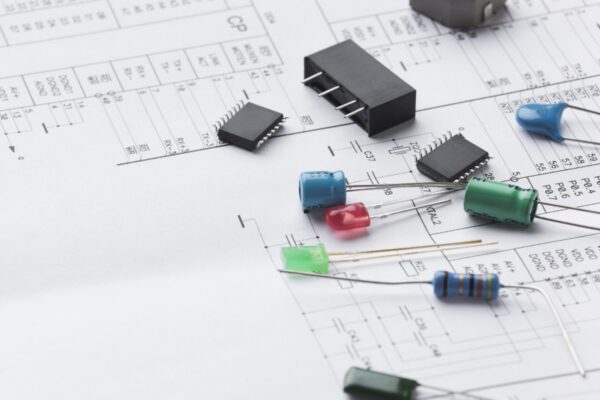What is Diode
A diode is an essential two-terminal electronic component used in various applications within the PCB industry. It is designed to conduct current primarily in one direction while blocking it in the opposite direction. This characteristic, known as asymmetric conductance, is achieved through the diode’s unique construction.
There are different types of diodes, including vacuum tubes or thermionic diodes, which consist of a heated cathode and a plate. In these diodes, electrons can flow from the cathode to the plate but not in the reverse direction. However, the most commonly used type of diode today is the semiconductor diode.
Semiconductor diodes are made of a crystalline piece of semiconductor material with a p–n junction connected to two electrical terminals. The p–n junction is formed by doping one side of the semiconductor material with impurities to create a region with excess electrons (n-type) and the other side with a deficiency of electrons (p-type). This creates a potential barrier at the junction, allowing current to flow easily in one direction (forward bias) and blocking it in the opposite direction (reverse bias).
Diodes play a vital role in electronic circuits, including PCBs, as they enable rectification, signal modulation, voltage regulation, and switching. Their discovery by German physicist Ferdinand Braun in 1874 laid the foundation for the development of diodes and other semiconductor devices. Silicon is the most commonly used material for manufacturing diodes due to its abundance and favorable electrical properties, although other semiconducting materials like gallium arsenide and germanium are also utilized based on specific application requirements.
Frequently Asked Questions
Why We Use Transistor Instead of Diode
Since a bipolar transistor is essentially two diodes, it can perform the same function. However, utilizing bipolar transistors as diodes may lead to issues with current and other ratings.
What Happens if You Wire a Diode Backwards
Installing the diode in reverse polarity can result in the Cloud Node or the door controller rebooting. Additionally, a faulty or blown diode can mimic the absence of a diode, exhibit incorrect data in the logs (e.g., a card scan when the strike reverts to its default state).
Why Do We Use Diode in PCB
PCB diodes are primarily utilized for the purpose of removing the negative component of an AC signal. By eliminating the negative portion of the AC waveform, the stripping process minimizes the loss of information and enhances the signal processing capabilities.
What Is a Diode Used For
Diodes have various applications such as serving as rectifiers, signal limiters, voltage regulators, switches, signal modulators, signal mixers, signal demodulators, and oscillators. Their key characteristic is their ability to conduct electric current in a single direction.
Which Way Do You Put a Diode on a PCB
The placement of the diode on a PCB is not critical. However, it is typically mounted on the top side of the PCB, specifically on the side with the silkscreen outline. To install it, bend the leads to fit through the holes and push them until the diode body rests on top of the PCB. If needed, you can slightly bend the legs outward to secure the diode in place while working.
What Does Diode Represent in a Circuit
Diode is an electrical component that permits the passage of current in a single direction. In circuit diagrams, a diode is symbolized by a triangle with a line crossing one of its vertices.
Why Do You Need a Diode With a Transistor
Diode-connected transistors are essential in current mirrors because they offer a voltage drop that aligns with the temperature changes of the other transistor. Additionally, they exhibit minimal reverse leakage currents.
Which Diode Is Mostly Used
A widely utilized type of diode in modern times is the semiconductor diode. It consists of a crystalline semiconductor material with a p-n junction that is connected to two electrical terminals.
Is It Necessary to Have a Diode
Despite their simplicity as two-pin semiconductor devices, diodes play a crucial role in modern electronics. They are essential for converting AC to DC, isolating signals from a power source, and combining signals.
What Is the Advantage of Diode
One of the key benefits of utilizing diodes is their capacity to safeguard electrical circuits against harm caused by short circuits, overvoltage, and overcurrent. Additionally, diodes are capable of converting alternating current (AC) into direct current (DC), which proves advantageous in providing power to electrical devices that rely on DC power.





